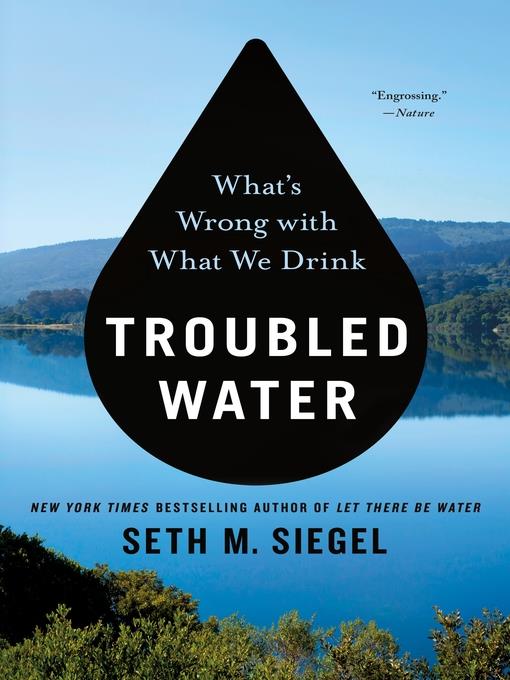
Troubled Water
What's Wrong with What We Drink
- اطلاعات
- نقد و بررسی
- دیدگاه کاربران
نقد و بررسی

August 15, 2019
A close analysis of the contaminants in our drinking water. Water activist Siegel, whose book Let There Be Water (2105) explored how Israel has dealt with water scarcity, now turns to the quality of drinking water in the United States. As the author makes abundantly clear, Flint, Michigan, is not the only place with problems. He shows the widespread nature of the problem, relating chilling stories and interviews with experts, activists, and victims. The causes are varied: chemicals from factories seeping into groundwater, lead leeching into pipes, deficiencies in Environmental Protection Agency policies, and the multiplicity of small, private water utilities exempt from testing regulations. At the beginning of the narrative, Siegel grabs readers with an up-close-and-personal story of a son's response to his father's death from kidney cancer after their town became home to a factory producing Teflon. From there, the author turns to a history of federal regulations regarding safe water, pointing out their omissions and their lack of clarity. On a more positive note, Siegel cites the Orange County Water District in Fountain Valley, California, as a model of what can be done with better technology. Unfortunately, he does not see the drinking water industry as open to new ideas, and he urges bipartisan support in Congress and state legislatures of measures that encourage innovation. He includes some of his own recommendations, such as consolidating small water utilities, funding research through a tax on disposable water bottles, replacing old water pipes with smart ones, adopting nanofiltration techniques, and moving drinking water safety out of the EPA and turning it over to the Department of Health and Human Services. Siegel's concluding suggestions about how readers can protect themselves from impure drinking water are less than reassuring, perhaps designed to spur action. Well-presented, hard truths about our drinking water, which "is less safe than we deserve."
COPYRIGHT(2019) Kirkus Reviews, ALL RIGHTS RESERVED.

September 1, 2019
The safety of U.S. drinking water is both a public health and an environmental issue. Lawyer and activist Siegel (Let There be Water) says water utilities and governments are doing a solid job guarding against dangerous microbes but a poor job against a host of other contaminants. Technology is available to have much cleaner tap water, but most water utilities are focused on keeping costs down. Although new compounds are constantly being produced, the Environmental Protection Agency has not expanded its list of regulated chemicals in drinking water for 20 years. Siegel points out that tiny amounts of some substances can cause major health problems. Bottled water, which many Americans rely on, is not necessarily safer than municipal tap water. Millions of private well users are left on their own by governments. This book recommends a complete overhaul of U.S. drinking water institutions and infrastructure, including consolidating small utilities, replacing toxic old water pipes, and supervising water testing. California's Orange County Water District is held up as a model of what could be achieved. VERDICT Siegel makes excellent arguments in favor of producing purer public drinking water. His proposals for doing that deserve serious consideration.--David R. Conn, formerly with Surrey Libs., BC
Copyright 2019 Library Journal, LLC Used with permission.

Starred review from October 15, 2019
Siegel follows up his bestselling Let There Be Water (2015) with another thoroughly researched and passionately written title about public water systems. His attention to details remains unchanged, and the information he imparts as he focuses on water contamination is critically important. After an opening chapter on the devastating pollution by DuPont of the water supply for the town of Hoosick Falls, New York, Siegel then reports on chemical contaminants in other parts of the country and the science used to discover them. Drawing on the history of chemical development and the establishment of laws to regulate the use and disposal of chemicals, Siegel takes readers on a ride through the annals of twentieth-century water pollution that will both inspire and infuriate. The Environmental Protection Agency draws his particular attention and Siegel suggests that administering federal water should be moved from the EPA to the Department of Health and Human Services. It's an intriguing idea in the midst of a book that proves the need for big and immediate changes. Along with Robert Bilott's Exposure (2019) and The Poisoned City (2018) by Anna Clark, this is a science title with real power to heal our sickened world.(Reprinted with permission of Booklist, copyright 2019, American Library Association.)




دیدگاه کاربران